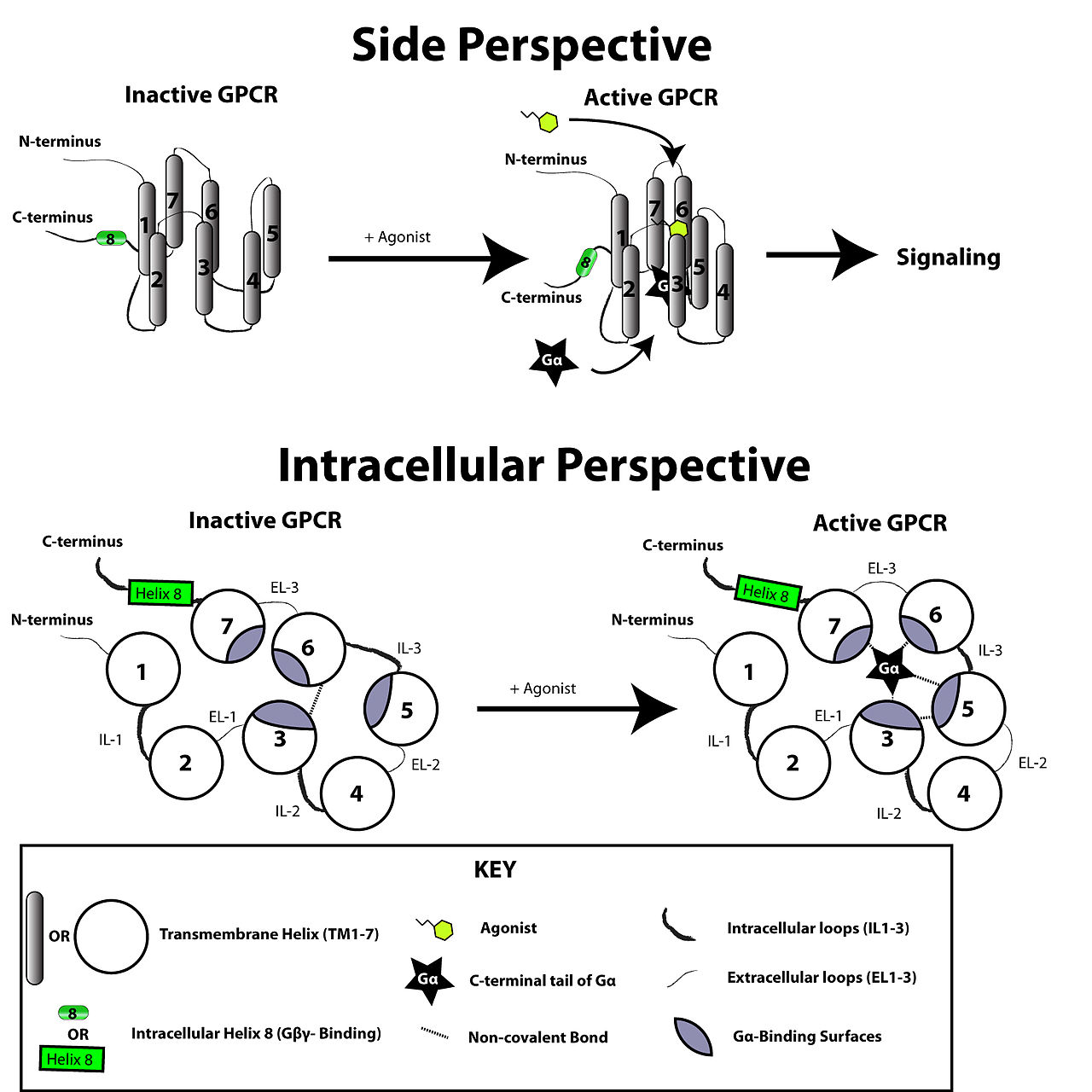GPCR
2022-04-23: reference:
GPCR (G-protein coupled receptor) #
-
 AKA 7-transmembrane (7TM) receptors, because they pass through the membrane 7 times. Weird.
AKA 7-transmembrane (7TM) receptors, because they pass through the membrane 7 times. Weird.- Disulfide bonds stabilize the domains, or at least the first two intracellular loops.
- ICL-3 determines the class of G-protein that bonds. ICL-2 and C-terminus influence binding in some cases.
- β-arrestin binding can also just cause internalization of the receptor.
-
The C-terminal can be palmitoylated at Cysteine residues, targeting the receptor to lipid rafts.
-
Neurotransmitters (sometimes known as ’neuromodulators’ in this context) bind to them, and this influx of ion does:
- Opens the ion channels directly (fr?)
- Stimulates the neuroreceptor’s corresponding G-protein subunit, which ultimately changes associated gated membrane channels (but not the same)
- I guess it makes sense, since it only needs one phosphate; ATP is ultimately supplying it. Wonder what happens with the pyrophosphate though. Nucleoside-diphosphate kinase, probably.
-
There are 6 types of GPCRs:
- Class A/1: Rhodopsin-like
- The largest group. Within it is dopamine, serotonin, histamine, opioid, amongst others - but not acetylcholine.
- Class B/2: Secretin receptor family
- Well it can’t be RTKs:
- Calcitonin
- Glucagon
- GHRH
- Parathyroid hormone receptor
- Secretin receptor
- Class C/3: mGluR/pheromone (and GABA-B)
- Monoamines and neuropeptides often exhibit this behavior.
- Class D/4: Fungal mating pheromone receptors
- Class E/5: cAMP receptors
- Class F/6: Frizzled/Smoothened
- Class A/1: Rhodopsin-like
-
Disrupting GPCR Complexes with Smart Drug-like Peptides
- These peptides are derived from the TM domains, designed to target oligomers at the ‘interface level’. However they have a short half life, bioavailability, etc. They talk about CB1-5-HT2A and D21.